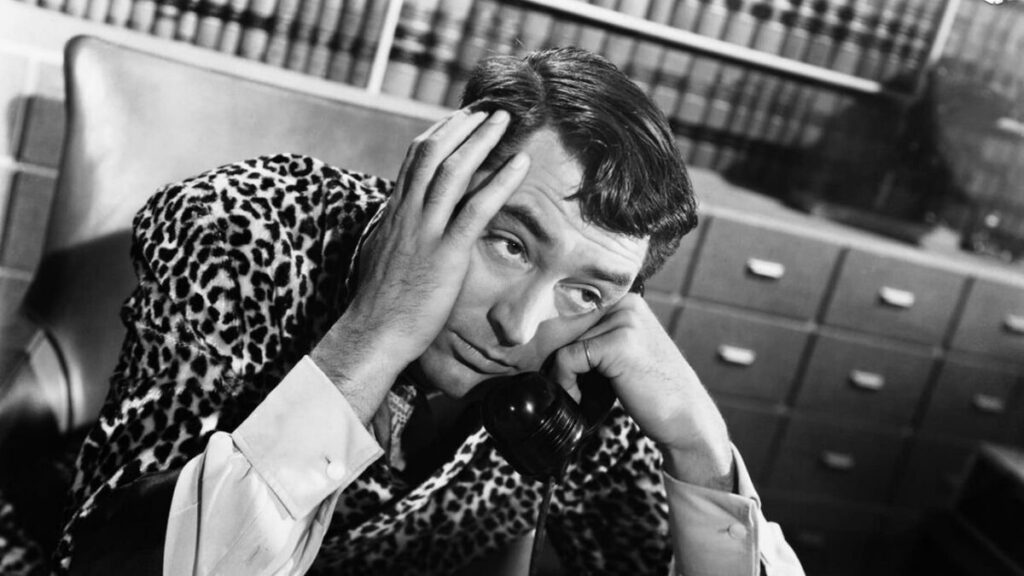
After having been shipwrecked for seven years Ellen Arden’s (Irene Dunne) husband Nick Arden (Gary Grant) has had her declared legally dead so that he can marry Miss Bianca Bates (Gail Patrick). But just as Nick has embarked on his second honeymoon Ellen returns home very much alive. The premise for My Favorite Wife (1940) is classic screwball.
Leo McCarey, who had previously directed The Awful Truth (1937), originated the project My Favorite Wife but was unable to do much more after a near fatal automobile accident. Journeyman director Garson Kanin was brought in to complete McCarey’s production but could never seem to capture McCarey’s own singular magic. Competently directed, My Favorite Wife lacks the taut montage and adrenaline of The Awful Truth (which also stars Grant and Dunne) that is so vital to the classic screwball comedy.
On the merits of its comedy My Favorite Wife never achieves the classic status of so many of McCarey’s films. The thing that makes My Favorite Wife unique and has allowed the film to endure is the relationship between Cary Grant and Randolph Scott. These two leading men of Hollywood’s golden age lived together for years as friends (and probably lovers). Their relationship off-camera has become the stuff of myth and a key point in Queer Film Culture.
Randolph Scott doesn’t appear in My Favorite Wife until roughly about half-way through the picture and when he does it’s revealed that Dunne was actually stranded on a tropical island with Scott for seven years. When the audience first sees Scott it’s when Grant goes to his club in a jealous fit to seek out the man who has spent more time with his first wife than he. As soon as Grant catches a glimpse of Scott in a swimsuit doing tricks off of a diving board he begins to gasp and sweat. The jealousy of the character Grant plays comes across as the sexual desire Grant felt off-screen.
In the scene that follows Grant, back at his law offices, can’t focus on his work as his mind is stymied by the image of Scott’s body. As Grant fidgets at his desk images of Scott exercising are super imposed all around Grant. Intentional or not, this section of My Favorite Wife re-positions the queer subtext in the film as text. These two rather explicit sequences may be the most memorable and relatable portions of the film but they are entirely cut off from what has preceded and what follows.
Contemporary Cary Grant fans delight in My Favorite Wife because it’s the only time that Grant’s real-life queerness is at all evident in his film work. In a picture like I Was A Male War Bride (1949) the queer aspects of Grant’s star persona are exploited as farce and often with a mean spirit. In My Favorite Wife these elements, these two scenes feel as if they were snuck into the film for the delight of a select few (at the time) in order to subvert the heteronormative codification of the screwball comedy. Now that everyone is “in” on the insinuation My Favorite Wife is popular for reasons totally at odds to those that made it a modest hit for RKO in 1940.
